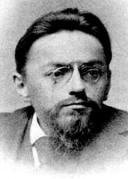-
(b.) -1865 April 09(d.)1923 October 26
Bio/Description
A mathematician and electrical engineer, he fostered the development of alternating current that made possible the expansion of the electric power industry in the United States, formulating mathematical theories for engineers. He made ground-breaking discoveries in the understanding of hysteresis that enabled engineers to design better electromagnetic apparatus equipment including especially electric motors for use in industry. Born into a Jewish family as Carl August Rudolph Steinmetz, he was born in Breslau, Province of Silesia in the city of Wrocław, the largest city in western Poland. He suffered from dwarfism, hunchback, and hip dysplasia, as did his father and grandfather. He attended Johannes Gymnasium and astonished his teachers with his proficiency in mathematics and physics. Following the Gymnasium, he went on to the University of Breslau to begin work on his undergraduate degree in 1883. He was on the verge of finishing his Doctorate in 1888 when he came under investigation by the German police for activities on behalf of a socialist university group and articles he had written for a local socialist newspaper, then a popular ideological pursuit among secular German Jews. As socialist meetings and press had been banned in Germany, he fled to Z?rich in 1888 to escape possible arrest. Faced with an expiring visa, he emigrated to the United States in 1889. He changed his first name to Charles in order to sound more American and chose the middle name Proteus after a childhood taunt given to him by classmates. Proteus was a wise hunchbacked character from the Odyssey who knew many secrets and he felt it suited him. Cornell University Professor Ronald R. Kline, the author of ?Steinmetz: Engineer and Socialist?, contends that other factors were more directly involved in his decision to leave his homeland, such as the fact that he was in arrears with his tuition at the University of Breslau and that life at home with his father, stepmother, and their daughters was full of tension. Despite his earlier efforts and interest in socialism, by 1922 he concluded that socialism would never work in the U.S. because the country lacked a "powerful, centralized government of competent men, remaining continuously in office" and because "only a small percentage of Americans accept this viewpoint today." He is known for his contribution in three major fields of alternating current systems theory : hysteresis, steady-state analysis, and transients. Shortly after arriving in the U.S., he went to work for Rudolf Eickemeyer in Yonkers, New York, and published in the field of magnetic hysteresis, which gave him world-wide professional recognition. Eickemeyer's firm developed transformers for use in the transmission of electrical power among many other mechanical and electrical devices. In 1893 Eickemeyer's company, along with all of his patents and designs, was bought by the newly formed General Electric Company, where he quickly became known as the engineering wizard in GE's engineering community. His work revolutionized AC circuit theory and analysis, which had been carried out using complex, time-consuming calculus-based methods. By 1893, he simplified these complicated methods to "a simple problem of algebra". He was the first to use complex number phasor representation, whereby the letter j is used to designate the 90 degree rotation operator in AC system analysis. His seminal books and many American Institute of Electrical Engineers papers "taught a whole generation of engineers how to deal with AC phenomena. He also made greater strides to the understanding of lightning phenomena. He undertook a systematic study of it, resulting in experiments of man-made lightning in the laboratory - this work was published. He was called the "forger of thunderbolts," being the first to create artificial lightning in his GE football field-sized laboratory and high towers, using 120,000 volt generators. He erected a lightning tower to attract lightning and studied the patterns and effects of lightning resulting in several theories and ideas. He served as President of the Board of Education of Schenectady, and as President of the Schenectady City Council. He was President of the American Institute of Electrical Engineers (AIEE) from 1901 to 1902, as well as the first Vice-President of the International Association of Municipal Electricians (IAME)?which later became the International Municipal Signal Association (IMSA)?from 1913 until his death. He wrote 13 books and 60 articles; not all about engineering. He was an honorary member and advisor to the fraternity Phi Gamma Delta at Union (whose chapter house there was one of the first electrified houses ever). He died on October 26, 1923 and was buried in Vale Cemetery, Schenectady. His connection to Union College is celebrated with the annual Steinmetz Symposium, a day-long event in which Union undergraduates give presentations on research they have done. Steinmetz Hall, which houses the Union College computer center, is named after him. He was portrayed in 1959 by the actor Rod Steiger in the CBS anthology series, The Joseph Cotten Show. The episode centered on his socialist activities in Germany. A Chicago Public High School is named for him. A public park in north Schenectady, New York was named for him in 1931. Based on his experiments, Steinmetz' formula defines the approximate heat energy due to magnetic hysteresis released per cycle per unit area of magnetic material. Steinmetz equivalent circuit theory is still widely used for the design and testing of induction motors.
-
Date of Birth:
1865 April 09 -
Date of Death:
1923 October 26 -
Noted For:
Fostered the development of alternating current that made possible the expansion of the electric power industry in the United States -
Category of Achievement:
-
More Info:


